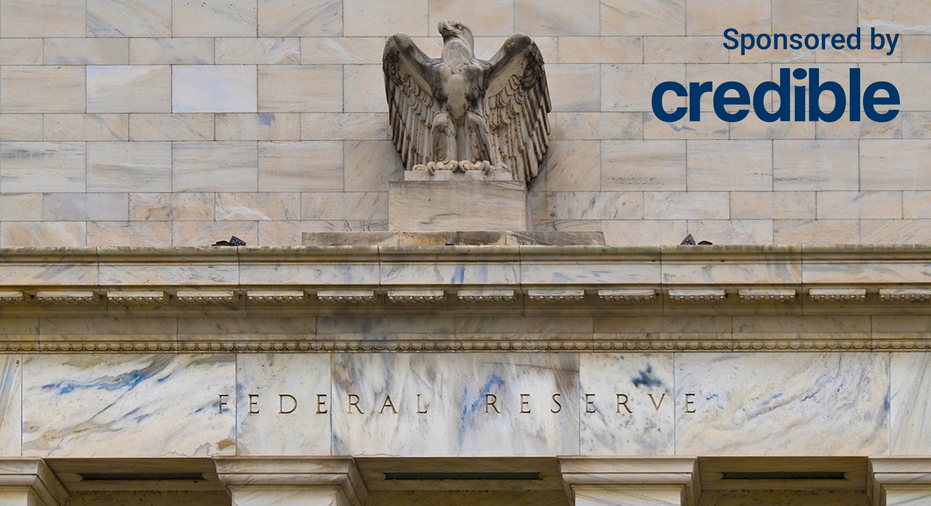Fed hits pause on June interest rate increase, but forecast calls for additional hikes
Borrowers won't feel much of an impact on record high credit card debt

The Federal Reserve hit pause on an interest rate increase in June to give itself room to see how recent rate increases impact price growth and the real economy. (iStock)
The Federal Reserve announced a much-anticipated pause on interest rate increases following continued moderation in inflation.
The central bank has already raised rates 10 times in 2022 and 2023 in a bid to bring inflation down to a 2% target, raising rates by another 25 basis points at its May meeting. Hitting the breaks on interest rate increases means the federal funds rate will remain in a targeted range of 5% to 5.25%, the highest level in 16 years.
The decision to pause the rate increase will help the central bank achieve two crucial goals, according to Keeping Current Matter Chief Economist George Ratiu.
"One goal was to acknowledge that monetary action works with a lag," Ratiu said in a statement. "Inflation has been on a downward glide path since the June 2022 peak, reinforced by this week's Consumer Price Index data. The headline CPI showed consumer prices still rising but at less than half the pace from last year. Slowing inflation gives the Fed a buffer to reassess broader economic data for a couple of months."
The second goal is to reassure the capital markets that the Fed is aware of the continued stress in the banking sector and its impact on the broader economy, according to Ratiu.
"The central bank wants to avoid over-tightening and causing an economic hard landing," Ratiu said. "At the same time, Jerome Powell has been unequivocal during his tenure that the bank is taking a data-centric approach and will continue pursuing its tightening until it reaches its inflation target."
If you are struggling amid high inflation, you could consider taking out a personal loan to help pay down debt at a lower interest rate, lowering your monthly expenses. Visit Credible to compare multiple lenders at once and choose the one with the best interest rate for you.
HOMEBUYERS ARE FINDING BETTER DEALS IN THESE CITIES, SURVEY SAYS
The economy held steady as interest rates soared
May's consumer price index — a measure of inflation — showed consumer prices continued to rise but at less than half the pace from last year. Although the economy continued to add jobs in May, the unemployment rate was also increasing, according to the latest jobs data by the Bureau of Labor Statistics (BLS).
Both are positive indicators that the Fed's policy is working and has given the central bank room to hit a pause on increases to assess the impact of its recent rate increases.
The Fed will meet once again in July and then break for the summer. Fed policymakers have signaled they could raise rates by another half percentage point in 2023, Federal Reserve Chair Jerome Powell told reporters at a press conference.
Whether it raises rates again before the break likely depends on the consumers' ability to manage high-interest rates while managing record-high debt levels.
"The likelihood of another hike or two has also increased given the lack of credit crunch the Fed was expecting from the banking sector," CoreLogic Chief Economist Selma Hepp said in a statement. "As a result, mortgage rates, while still on a gradual decline, are likely to remain higher through the remainder of the year."
If you are interested in taking advantage of lower mortgage rates, you could consider refinancing your loan to lower your monthly payment. Visit Credible to find your personalized interest rate without affecting your credit score.
MORE STUDENTS TURNING TO FEDERAL AND PRIVATE STUDENT LOANS TO FINANCE COLLEGE: SURVEY
June's rate hike break won't impact consumers' wallets, expert says
For consumers, the break from recent rate hikes is not likely to make much of a dent to record high borrowing rates, according to Michele Raneri, vice president and head of U.S. research and consulting at TransUnion.
For example, the ongoing interest rate increases have translated to a 5.0% increase in the Prime Rate, which lenders use to set rates for different types of loans, credit cards and lines of credit, according to Raneri.
Credit card balances dipped 1.5% quarter-over-quarter but remained near record highs at $917 billion. That's an increase of almost 20% over last year, according to TransUnion. Consumers with credit cards have an average balance of $5,800. Interest rate increases since March 2022 mean they are paying an extra $290 in annual interest charges.
"With the summer travel season getting underway this month, consumers should continue to use credit diligently when they can, and with the continued understanding that even if interest rates do not rise this month, they may very well increase again in the future, and as interest rates rise, so do minimum credit card payments," Raneri said in a statement. "Consumers should ensure they are able to make those payments that come through their use of credit in order to avoid delinquency."
If you are struggling to pay off debt, you could consider using a personal loan to consolidate your payments at a lower interest rate, saving you money each month. You can visit Credible to find your personalized interest rate without affecting your credit score.
THESE TWO FACTORS COULD BE DRIVING YOUR CAR INSURANCE COSTS UP
Have a finance-related question, but don't know who to ask? Email The Credible Money Expert at moneyexpert@credible.com and your question might be answered by Credible in our Money Expert column.




















